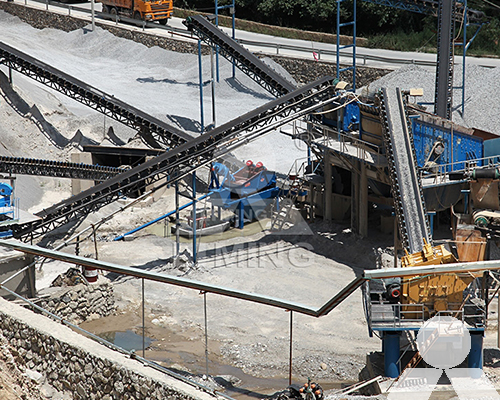Stone crushing plants crushing processing flow
A stone crushing plant, also known as a stone crushing and screening plant, is a facility that processes various types of rocks to produce crushed stone of various sizes required for construction and other uses. The process of stone crushing involves several stages to achieve the desired end product. Below is an overview of the typical process flow for a stone crushing plant:

1. Raw Material Acquisition: The process begins with the acquisition of raw materials from quarries or mines. These raw materials, which can be hard rocks, limestone, granite, basalt, or other types of stone, are extracted from the earth’s crust through drilling and blasting techniques.
2. Primary Crushing: The extracted raw materials are transported to the primary crusher by dump trucks or conveyors. The primary crusher, which is typically a jaw crusher or a gyratory crusher, reduces the size of the rocks to a more manageable size. This stage produces raw materials that are suitable for further processing.
3. Secondary Crushing: The crushed raw materials from the primary crusher are then conveyed to secondary crushers such as cone crushers or impact crushers. Secondary crushing further reduces the size of the stone particles, producing aggregates of different sizes depending on the specific requirements.
4. Screening: After secondary crushing, the crushed materials are screened to separate the desired sizes of aggregates from the oversize materials. This process is carried out using screens that have different-sized openings. The screened aggregates are then conveyed to storage piles or bins.
5. Tertiary Crushing (Optional): In some cases, a tertiary crushing stage is included to further reduce the size of the aggregates. Tertiary crushers like vertical shaft impactors (VSI) are used to produce finer and more uniform aggregates.
6. Washing (Optional): Washing the aggregates may be necessary to remove any impurities, dust, or clay that could affect the quality of the final product. This step is especially important if the aggregates will be used for applications that require high levels of cleanliness.
7. Stockpiling: The processed aggregates are stockpiled in designated areas according to their sizes and specifications. These stockpiles are then ready for use in various construction projects or other applications.
8. Transportation: The final products are loaded onto trucks, railcars, or other means of transportation for delivery to construction sites, concrete batching plants, or other destinations where the crushed stone will be used.
9. Environmental Considerations: Throughout the entire process, it’s essential to consider environmental factors and implement measures to mitigate potential impacts such as dust control, water management, and reclamation of quarries or mining sites.
In conclusion, the stone crushing plant process involves several stages, including primary crushing, secondary crushing, screening, and optional tertiary crushing and washing. The process transforms raw materials into various sizes of aggregates that are essential for construction projects and other applications, contributing to the development of infrastructure and the economy.









